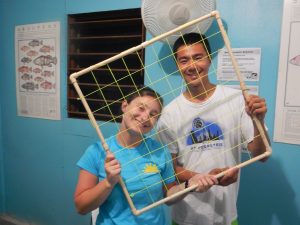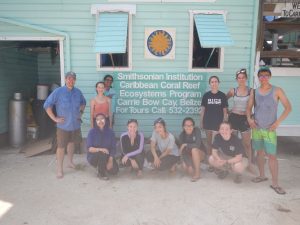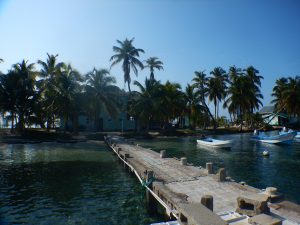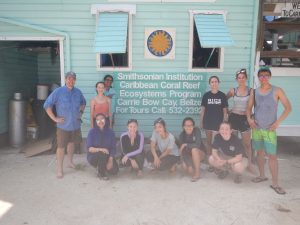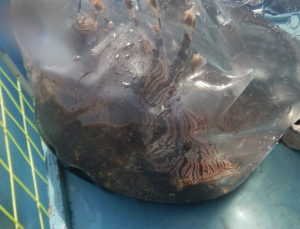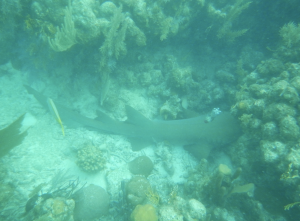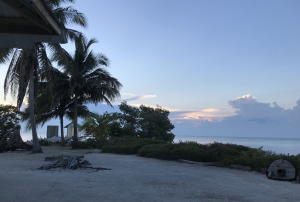Today after breakfast, we took out all of the seven lionfish we (read: Scott, he didn’t let us wield the Trident of Glory) speared and let them defrost for a while. Scott cut off the spines after we weighed them, since there’s probably some rule against letting students handle venom. Then, we took some basic measurements such as the length with and without counting the tail, and the mouth gape height and width. After that, we sliced those babies open to determine their sex, reproductive status and the contents of their stomach. Andressa and I found a partially digested fish in ours. Yum.
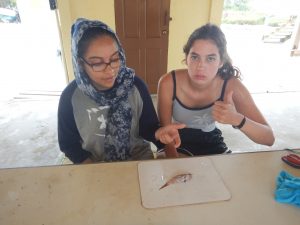
After we finished dissecting the lionfish, Scott cut them up into tiny pieces, marinated them in lemon juice to kill all the bacteria and other stuff. Then he added chopped tomatoes and onions, and we ate it just like that. I was a little hesitant to try it at first, but then I remembered that I ate a termite in the Chiquibul Forest while we were staying at Las Cuevas Research Station.
While half the class went out for a voluntary snorkel session after lunch, some of us engaged in other pastimes. Me, Kristen, Andressa, Claire and Sami (don’t ask her about it, she’ll deny it) dug a 6 in*12 in hole in the ground and filled it with about 25 hermit crabs. We watched them interact with each other (read: walk over) and finally decided to let them out of the hole after a while; the great Hermit Crab Exodus. No, this was not for science and yes we are all really college students.
In the afternoon, we took the boat to the resort located on the island of Southwest Caye. We just walked and talked around the island until sunset. Then we hopped back on the boat under perfect pastel skies, with both the sun and the full moon present at the same time. After dinner (there was chocolate cheesecake!) we all went out on to the dock and Scott led us all in group meditation under the stars. It was so peaceful and beautiful, and the perfect ending to such an amazing trip.




